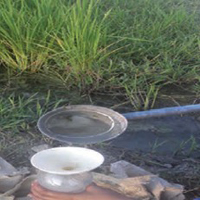A faunal study on medically important mosquitoes (Diptera: Culicidae) in Qir and Karzin from Fars province, southern Iran, during 2017-18

Accepted: 25 November 2020
HTML: 16
All claims expressed in this article are solely those of the authors and do not necessarily represent those of their affiliated organizations, or those of the publisher, the editors and the reviewers. Any product that may be evaluated in this article or claim that may be made by its manufacturer is not guaranteed or endorsed by the publisher.
Authors
Mosquitoes have always played an important role in transmitting a wide range of viral and parasitic diseases to humans and animals. Given that so far there has been no study on the fauna, distribution and characteristics of mosquito habitats in Qir and Karzin County, we decided to investigate these unknown data in this important tropical area in south of Iran for the first time. Adult mosquitoes were collected by hand-catch and total catch methods from indoor and outdoor places in Qir and Karzin Counties from four different geographical regions during the activity seasons of mosquitoes in 2017-18. Also, larvae were collected from aquatic habitats using WHO recommended standard dipper. Collected mosquitoes were identified using valid taxonomic keys. A total of 1884 specimens of Culicidae mosquitoes (1103 adults and 781 larvae) were collected from twenty-one sampling areas during the mosquito activity seasons in Qir and Karzin County. Totally 11 species in 3 genera (7 Culex, 3 Anopheles and 1 Culiseta species) were identified. The dominant larva was Cx. laticinctus with a total number of 227 (29%), and Cx. sinaiticus with 407 specimens (36.9%) which was the most frequent adult mosquito. Most larval habitats in this area were sunny and almost without vegetation breeding sites with temporary, turbid and stagnant water. In this region, compared to the area of the County, there was considerable species diversity for mosquitoes. This phenomenon is very important from an ecological and health point of view. Due to the existence of some important vectors of arthropod-borne diseases in this region, the health system should be alert and continuous and accurate monitoring of these vectors should be included in the routine vector-borne diseases control program.
How to Cite

This work is licensed under a Creative Commons Attribution-NonCommercial 4.0 International License.
PAGEPress has chosen to apply the Creative Commons Attribution NonCommercial 4.0 International License (CC BY-NC 4.0) to all manuscripts to be published.

 https://doi.org/10.4081/jear.2021.9378
https://doi.org/10.4081/jear.2021.9378



